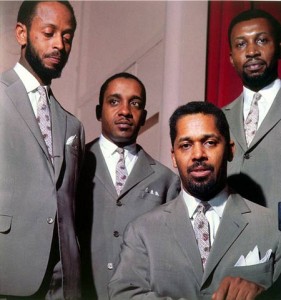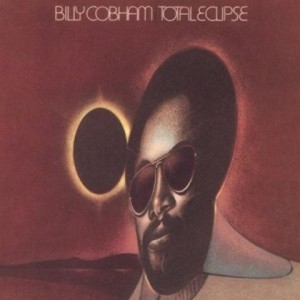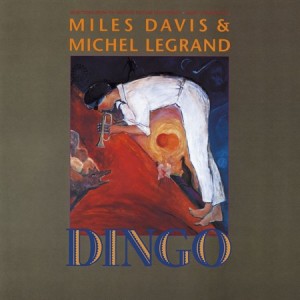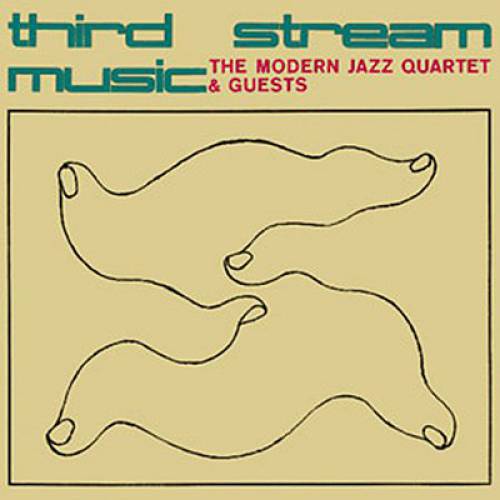Delivered during 2012, and continuing into 2013, Warner Bros. concatenate series of iconic jazz albums by some of the scene’s most acclaimed artists and groups, bundles together exemplary offerings from Billy Cobham, Miles Davis and the Modern Jazz Quartet.
Ordered in a sometimes casual and puzzling linear fashion – the Modern Jazz Quartet’s discography isn’t exactly faithfully adhered to, and Miles Davis’s 80s contributions look to have fallen foul of the curatorial hand – each release comprises of five albums; each one a proven master class in the jazz canon, though some will inevitably shine brighter than others.
Plucking liberally from the catalogue a triumvirate of key movers, Cobham, Davis and the MJQ all individually represent different eras – the MJQ covers the end of the 50s into the mid 60s, Cobham the 70s, while Davis arks the mid 80s to dawn of the 90s – and styles. And of course each of these cover stars’ sound revolves around a different instrument, whether trumpet, vibraphone or drums.

It takes some confidence to carry a name like the Modern Jazz Quartet, but in the burgeoning age that evolved out of the great American bandleader era of hard-swinging jazz and doo-wop, this quartet smoothed the path to a lighter more transcendental style that was rightly labelled ‘modern’.
Former members of the Dizzy Gillespie band, alchemist of the vibraphone Milt Jackson, elegant pianist and bandleader John Lewis, empirical double-bass player Percy Heath and attentive drummer Connie Kay recorded their first session together in the early 50s: admittedly as a reunion. It soon transpired that the birth of a new ‘cool’ was brewing; one that was highly intuitive, sensitive and sophisticated. Hardly ‘bombastic’ in their challenging delivery, the quartet created congruous translucent ripples in the fabric of jazz.
This particular honorary batch begins with the groups diaphanous 1959 Pyramid LP – already their twelfth album in. Not exactly alluding to the tomb of the Pharaohs, this delicately poised record shuffles between twinkly celestial vibraphone saunters and composed meditations. From the quaint swing of lounge salon to the stoic, the MJQ mix their own future jazz standards – the moody nod to Django Reinhardt, Django – with a signature take on Duke Ellington’s It Don’t Mean A Thing (If You Ain’t Got That Swing) and compositions by the partnership of Nancy Hamilton/Morgan Lewis (How High The Moon) and Jim Hall (Romaine).
Alluded to as their ‘most creative period’, the MJQ merged with a string quartet and chamber sextet on the innovative 1960 experiment, Third Stream Music, which saw them play host to the Jimmy Giuffre Three and The Beaux Arts String Quartet.
In my mind a stirring suite and successful fusion of classical and palatial jazz, it was considered a bit of a failure in its attempts to carve the new ‘third stream’ of the title, pathway.
Despite the number of guests, the sighing violas, Giuffre’s searching clarinet, flute and tenor sax, and the low roaming bassoon are all given their moments to steer and describe certain yearnings and memories.
Traversing the highbrow dinner party, Sputnik space and Hitchcockian, the Third Stream still sounds as evocative and, even, provocative, fifty years on.
That same year, the MJQ recorded another classical elicited narrative, The Modern Jazz Quartet & Orchestra, in West Germany. Symphonic movements chime with whimsical Christmas carols (England’s Carol) and the bright lights of Broadway (Third Movement). Surprisingly the orchestral elements sound perfectly at ease with the contemporary jazz score, but then the MJQ weren’t exactly strangers to the classical, having studied them in fine detail.
Skipping forward a couple of years, the MJQ’s lamentable romantic direction on Lonely Woman seems like a slight meander into the fey. The serenaded tones resonate with softened washes of shimmering cymbal and emphasized reflective pauses. Before he cut all his ties with Earthy pursuits, Ornette Coleman produced some more sober material, including this album’s title track, which the MJQ lend a gentle pliable sheen to.
Enthused with a vibrant palette, the group merrily hopped along to a breezier beat on their final example of this series, The Sheriff. Down to the, ‘very much of its time’, almost amusing sleeve art, this wispy run through bouncing, swinging original compositions and South American covers (Brazilian’s Heitor Villa-Lobos and Luiz Bonfa have their Bachianas Brasileiras and Carnival songs covered by the band), is a great place to finish the oeuvre.
Released 10th December 2012
Pyramid [Rating:4]
Third Stream Music [Rating:4.5]
TMJQ&O [Rating:4]
Lonely Woman [Rating:3.5]
The Sheriff [Rating:4]

Moving on into the seventies, with the voracious fusion of jazz, funk and the far out, former US army conscript, Billy Cobham, allowed his drum kit to roam wildly and take a fair old pummelling in the process.
Leaping from the starched fatigues of conformity into apprentice slots with Miles Davis (famously on the Bitches Brew opus, and sitting-in at the Isle Of Wight Pop Festival of 1970) and Horace Silver, Cobham went on to form the influential Mahavishnu Orchestra, stretching the limitations of jazz all the way.
Whilst still a member of the MO (he’d leave for the first time in 1973, before returning for the MK II incarnation in the 80s), Cobham recorded his solo debut, Spectrum; an unequivocal energetic mix of unwieldy cosmic slop guitar, thundering and rapid ricocheting double kick peddling drums, and 12-bar jazz gone native!
Featuring the arching, noodling rock guitar solos and lead that would become a familiar presence to the Cobham sound, Tommy Bolin (later to join Deep Purple), is tasked with really giving it some gospel. Sampled by future generations – Massive Attack fans will recognize Status – Cobham’s first album also drifted across the pond to Europe – Krautrock connoisseurs may pick up on the relationship to the music of Mani Neumeier’s Guru Guru (especially after their UFO LP). No matter how sophisticated, or ‘twiddly muso’, Cobham always inserted some humour into his work, from the video-game effects and title of Snoopy’s Search to the general free spirited nuttiness of some of the playing itself.
Enchanted like so many of his contemporaries and predecessors before him with the allure of Spain, Cobham’s follow-up album Crosswinds features an elegiac, contemplative suite to the country. Spanish Moss – A Sound Portrait is an atmospheric peregrination, complete with stormy tailwinds and reflective mountaintop stances. Very much singing from the same hymn sheet, this measured response to a shifting weather front echoes Miles Davis’s own projected environmental soundtracks. Sedate for the most part, the funk is stripped away to make room for a sweeter drifting backing.
Transcending terra firma for a tiptoe across the stars, the acid fusion drummer set his sights on aurally mapping the moon’s surface with his next release, Total Eclipse, in 1974. A far more meditative and plaintive affair, the lunar soundtrack features a stunning veranda of solar wind shifting percussion and moving up-tempo melodic piano – found to be the most driven and panoramic gazing on the Solarization movements and Sea Of Tranquillity. Mind it does hot up with Colombo detective funk on the title track and slips in some Arkestra moments of hallowed jubilant space jazz.
Nestled in-between this space adventure and last chapter of the Cobham quintet, Shabazz is a live proposition, recorded on tour in Europe. Only four tracks in length, each a display of galloping expletory fusion jazz, the recorded versions are re-shaped and given even more welly! Half of the album is made up of the debut, Spectrum, with Red Baron and Taurian Matador wrestled from their environment and amped-up to the maximum. Donald Duck wah-wah, sparkly twinkled keys, and Cobham’s ‘helter skelter’ drum solos – often in a world of their own – fluctuate between the light and shade, making this a rambunctious performance.
Resisting the urge to go deeper into the sublime, Cobham returns to the playful spirit of his debut on his fifth album, A Funky Thide Of Sings. Steaming through a sizzling, yet very smooth, set of moods that include looning wizardy effects (Sorcery) and crime-caper chase on the streets of the city (AFTOS), Cobham can be very mischievous, but still maintain some air of decorum in his fusion blasts of optimism. The funk as you may have guessed from the records moniker does make a return, best exemplified by the workout, A Funky Kind Of Thing, and more sombre Spanish Harlem meander, Moody Moods.
Undeniably a key figure and pioneer in the fusion mode, Cobham’s use of rock music coupled with funk did run parallel to the investigations of Bootsy Collins and George Clinton. His bounty of breaks and Ritalin-starved manic drumming proved fruitful for those who came on later. This worthy reminder, despite the often-disingenuous connotations and flippant despondency angled at ‘fusion jazz’, does reawaken a challenging epoch in the history of its development.
Released 14th January 2013
Spectrum [Rating:3.5]
Crosswinds [Rating:3.5]
Total Eclipse [Rating:4]
Shabazz [Rating:3.5]
AFTOS [Rating:3.5]

Returning from his own imposed exile, Miles Davis’s cocaine-fuelled lifestyle had all but left his music limp and impotent. Yet with renewed vigour he picked-up on where he left off after bouncing back from the excesses of the late 70s; though he returned to a scene populated by the burgeoning Hip Hop and street sounds of urban America, and new shinning lights of rock, R&B and soul like Prince.
It was with Prince that Davis originally planned to record the first album in this series. The meeting of minds never actually happened; instead Davis formed a partnership with the bassist and writer/arranger Marcus Miller – a bond that would last three albums. Named in tribute to Soweto’s Archbishop and legendary man of patience, Desmond Tutu, the first album in the Miller/Davis cycle, immersed itself in the politics and music of the times, with Nelson Mandela epitomised on Full Nelson – a riff on a much older Half Nelson composition by Davis; a nod to jazz maestro Nelson Boyd.
The heady brew of Art Of Noise-esque production and funky licks is balanced with punctilious serenades, spiky punctuations and transient passages of wisdom. Even though Minnesota’s favourite son is absent, his aural can be heard throughout in the modern, verging on commercially hip, sound.
Davis, shocking his audience and the industry with it, had just left the label he’d been apart of for the last thirty-years, Columbia, to jump ship and join Warner Bros. after a bitter dispute with the management – in part set off by Davis’s acrimony with fellow jazz trumpeter, Wynton Marsalis, who’d questioned his commitment to ‘true jazz’.
His change of scenery didn’t dent his appeal or success, as Tutu garnered two Grammy awards for the effort.
Sticking with the successful Miller partnership, Davis musically perused due south to soak up some Caribbean vibes on his 1989 LP, Amandla. Juggling an acquired taster of Go-Go, swing jazz and the local homegrown Caribbean Zouk, Amandla floats the wistfully exotic and dry-ice sombreness of 80s R&B production. Played live with tinkering electronics added on after, the island life suite features Davis’s purposeful interpretations of George Duke’s Cobra, and a touching eulogy to Weather Report’s late great bass-player, Jaco Pastorius (Mr. Pastorius).
Both this album and his final one, Doo-Bop, were released posthumously. Amandla was at least complete, the curtain call Doo-Bop would have to be finished by the Hip Hop producer Easy Mo Bee.
Inspired by the sounds emanating from outside his apartment window (or so the story goes) Davis’s manic itch to record another bombastic urban, contemporary album prompted him to contact one of the ‘scenes’ most prominent ‘go-to-men’, Russell Simmons, who introduced him to Easy Mo Bee.
Growing in reputation through his work with a stable of Hip Hop artists, including Big Daddy Kane, Mo was pretty enthralled to be working with Davis; especially after the success of Gang Starr, who’d managed to mix up golden era jazz with intelligent prose style rap to much acclaim.
However Davis died on September 28th 1991, having only laid down six tracks. Challenging to say the least, the project continued without its main star, with Mo building a soundtrack of sequenced beats, samples and raps around Davis’s magical solos.
The results sound like Davis jamming with his old pals (High Speed Chase for example features Donald Bryd’s Street Lady) over New York’s omnivorous present music scene (from ESG’s UFO to Doug E Fresh & Slick Rick’s La Di Da Di). Davis’s 8th and final Grammy was duly awarded to him as a mark of respect.

During the period covered in this Warner Bros. appraisal, Davis also completed two soundtracks, both suffused with memorable lamented wooziness and viscerally mournful narration.
Davis and his collaborators may have carried out their part of the bargain; unfortunately the first of these films was an utter stinker, more memorable for its leading lady, Ellen Barkin, and her infamous titillating nude scene. Music From Siesta really does deserve so much more.
The Mary Lambert ‘art house’ (read ‘over-indulgent’) story shot in Spain, might have boasted of a reasonable enough cast (Jodie Foster, Gabriel Byrne, Isabella Rosellini) yet it failed dismally to shine, its’ only redeeming feature the transient pining soundtrack.
The highlight of this entire five-album spread, Davis returns to one of his most repeated themes. Regimental tight drums, ambient sweeping mysticism and Catholic guilt, all dreamily narrate a passage through the abstract – at times almost Walker-esque – landscape.
Imbued with the influence of past successful composers in the genre, Theme From Augustine/Wind/Seduction/Kiss could be some lost Eno experiment, and the segue Afterglow sounds like one of Vangelis’s misty Blade Runner triumphs.
A better film by far is the Rolf de Heer directed Dingo. Davis, himself, stars as the maverick jazz trumpet legend Billy Cross (no stretch there), the obsession of the story’s central character John Anderson. After a chance meeting with his hero in the Australian outback, Anderson follows his idol on a metaphorical pilgrimage, from his hometown in the ‘middle of nowhere’ to Europe.
It’s a perfect encapsulation of Davis’s last years, a final bow so to speak. Davis passes over the baton to the next generation, as he jams on a Parisian nightclub stage with the younger Anderson character. Even his performances are reflective, strained and sedate, more in tune with the past than present, as evidenced on his last album Miles & Quincy Live At Montreux, which was a return to the material he’d first performed in the 50s and 60s, a last look back at the legacy.
Davis shares duties with the French film and TV composer Michel Legrand. Scoring everything from foreign language to English blockbusters, Legrand’s signature smooth and paced orchestral backing is hardly noticeable, merely accentuating Davis’s swinging jazz and trumpet solos.
Set out in a linear fashion, with snatches of dialogue, the track list faithfully adheres to the storyline sequence, which carries a more sober tone on reflection, as Davis passed away only eight months later.
Released 10th December 2012
Tutu [Rating:3.5]
Music From Siesta [Rating:4.5]
Amandla [Rating:3.5]
Dingo [Rating:4]
Doo Bop [Rating:3.5]
A mere dip in the rich pool of classics this trio of revered jazz apostles is only the start of an extensive collection, which is set to continue during 2013. My only concern is to whom this series is aimed, as aficionados and collectors will surely own all these records already. With no extras or previously unearthed material, these box sets will not appeal to the jazz enthusiast, but may be an entry level to the intrigued and for those just starting to build a library.




